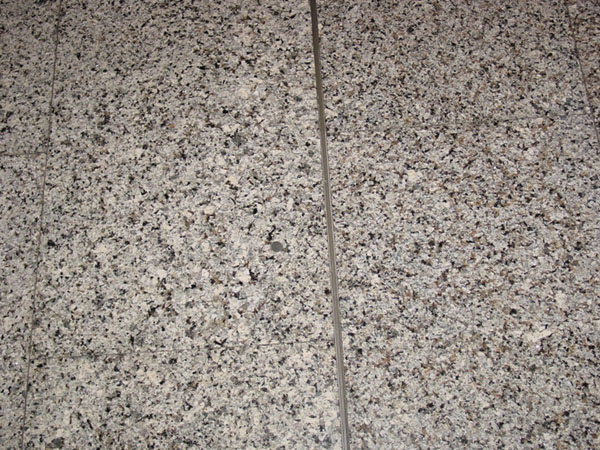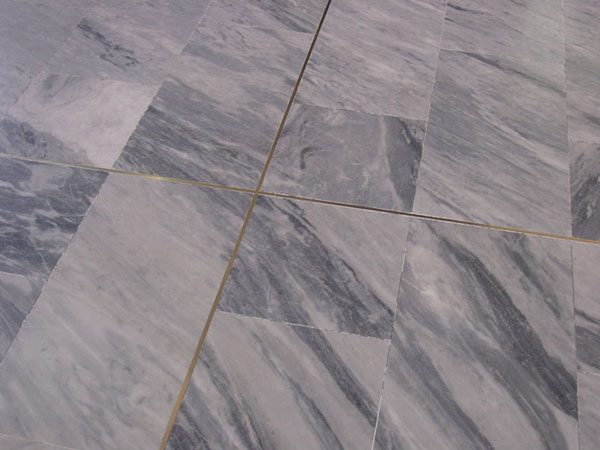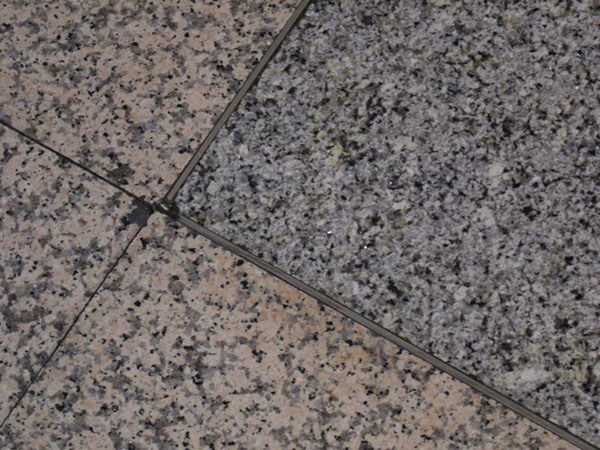Eva Portas Fernández, Technical consultancy area Granite Technology Center www.fctgranito.es
The construction of pavements, especially outdoor, is perhaps the most difficult constructive application for natural stone, due to the magnitude of mechanical weights, ease of water saturation, due to an almost horizontal position deposit of polluting particles on the pavement surface and dumping of undesirables products by humans, among other factors.
To project a pavement, while taking into account the above, we define the constructive section, ie, the elements that will be required for construction. Among these, it is essential to define the type of joints, their dimensions and their arrangement on the paved area.
Joints are construction units that divide up the pavement to absorb movements from the various elements it supports.
In a pavement project using natural stone the following joint typologies should be taken into consideration: division joints, intersection joints, and joint seals.
Size and layout:
The layout of division joints in the pavement depends on the stone’s thermal coefficient, sensitivity to water (moisture expansion) and support deformability. Depth must affect slab thickness and adherence material, and width should be, at least, 10 mm.
In general, the maximum surface area that must be coated between division joints is 50 m² or a maximum size of 8 lineal meters.
Intersection joints are joints with hard elements, such as partitions, walls, pillars, etc. In indoor flooring, these joints are often hidden because they are covered with skirting boards. They must be 10 mm thick and the depth should be at least equal to that of the slab, adding at a minimum, the thickness of the bonding material.
The joint seals are the free space between adjacent slabs, in which grout touches only the edge of the slab. Width should not be less than 3 mm in outer and 1 mm for interior flooring.
Installing joints should always be done with dividers in order to maintain the predicted joint width as much as possible.
Grout materials:
In general, grout materials should have properties such as adequate deformability and adaptability for predicted movements, suitable resistance for the envisaged use, good adherence to flagstone edges, resistance against atmospheric and cleaning agents, water proofing when required, and durability.
Grout materials may be of different types:
1. Elastic joint fillers for onsite application: Acceptable for sealing division joints and contour joints in rigid pavement, for indoor as well as outdoor use with different traffic categories. Flexible joints with elastic joint filler are not recommended for areas with vehicular traffic equipped with rigid or semi-rigid treads.
Thicknesses are usually between 8 mm and 30 mm according to manufacturing specifications.
They have the ability to seal the joint externally, adhering to the sides (never to the base), and should have the correct MAF (Movement Accommodation Factor) for the width of the joint and predicted movements. Joint fillers with a MAF of 20 % at minimum are recommended.
The most common types of joint filler used in pavements are:
- Silicone, preferably neutral to avoid discolouration and stains on the edges and with a MAF of 25 %, recommended for use on moderate traffic pedestrian pavements.
- Polyurethane, one of two components with a MAF of 20 % and 25 %, used in interior or exterior pavements with moderate traffic.
- Polysulphide, one of two components with a MAF of 20 % at minimum, used in exterior pavements with heavy traffic or subjected to chemical aggression.
Fugue of elastic putty

For correct on-site placement and performance of joints sealed with joint fillers it is important to have deformable materials in the inner filling of the movement joint. The functions and requirements of filler material are:
- Keep the joint clear of rigid material in its entire depth and avoid gaps between the sealant and the joint base that may jeopardize the adherence of this sealant with the flagstone´s sides. Therefore, it is common to use damp resistant and distortion resistant materials such as expanded polystyrene plates which are joint inlaid.
- The sealant should act as a base to maintain a uniform depth specified by the manufacturer. The most suitable are closed cell extruded polyethylene foam rods, sold in different sizes (from Ø 6 mm to Ø 30 mm).
2. Deformable or skid prefabricated profiles: Are suitable as filler for division joints and intersection joints in rigid pavements, indoors as well as outdoors, with different traffic categories.
The most common types of profiles for this usage are:
- Those consisting of a single profile made of aluminium, brass, stainless steel or even Polyvinyl chloride (PVC), with deformable materials inserted (EPDM, neoprene, or similar rubber). It is important to keep in mind the limited degree of joint movement accommodation, especially traction.
PVC profile - Rigid brass profile

- Those consisting of two separate profiles of aluminium, brass or stainless steel, which are anchored to each side of the joint with deformable materials inserted (EPDM, neoprene, or similar rubber). They have a high degree of movement accommodation (over 20 %) and there are some which even permit changing the deformable material.
Two independent profiles and deformable filling

- Those consisting of two separate aluminium, brass or stainless steel profiles, which are anchored to each side of the joint and work through skidding. They often have a high degree of movement accommodation (about 20 % to 30 %) and are suitable for the most demanding load requirements and concentrations.
3. Materials for joint grouting or joining between pieces: among those that should be highlighted are sand and cement grouting materials.
- Sand: Is a suitable material for joint grouting between flagstones when they are directly supported by sand bedding, with certain usage limitations, such as gardens or recreational spaces with pedestrian and light vehicle traffic up to 200 daN in weight.
Sand is not suitable for grouting cobblestones in areas of intense rain or large water spillage, areas exposed to strong winds or when joint width is greater than 5 mm.
Sand, preferably siliceous sand, should be free of organic material, metallic minerals and mica.
- Materials for cement grouting: Should be specified for each usage; pedestrian or road traffic, different absorption values of the slab sides, different slab sizes and hygrothermal behaviours, different stabilities of the substrate, etc.
It is essential to bear in mind that the requirements for these materials are established in EN 13888 Standard.
To summarize this report, it is important to note that, particularly in each case, the type of grout material should be selected according to accommodation capacity for joint movement, the traffic envisaged, the pavement laying method, the thickness of the slabs, etc, and always following manufacturer recommendations.
Sections
